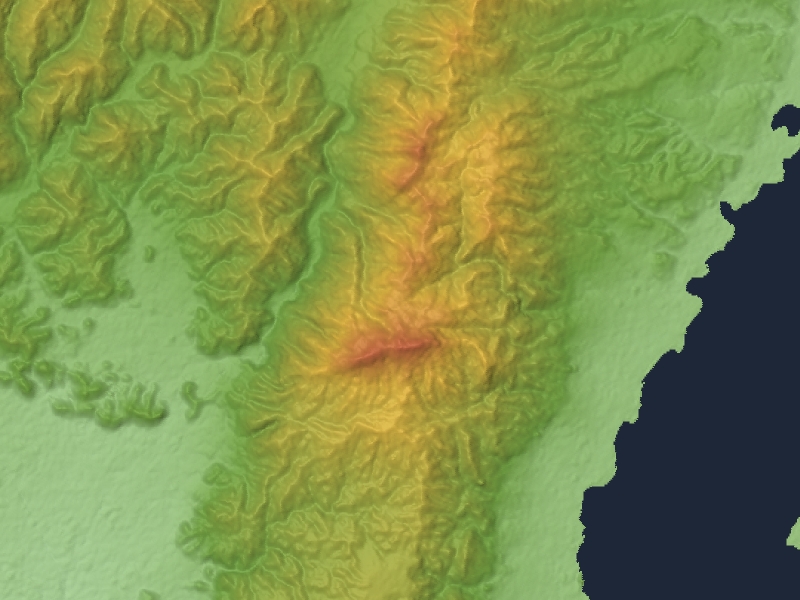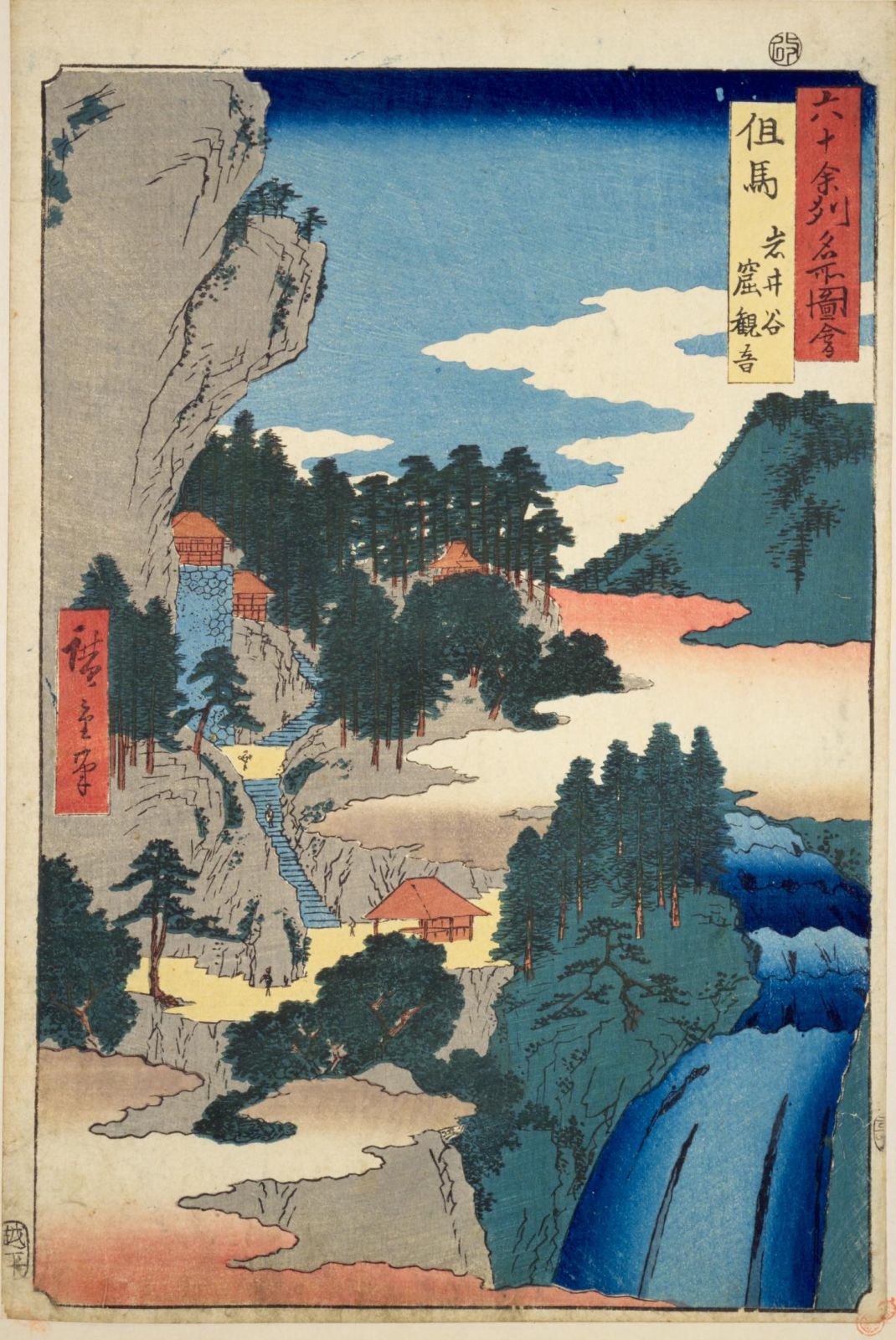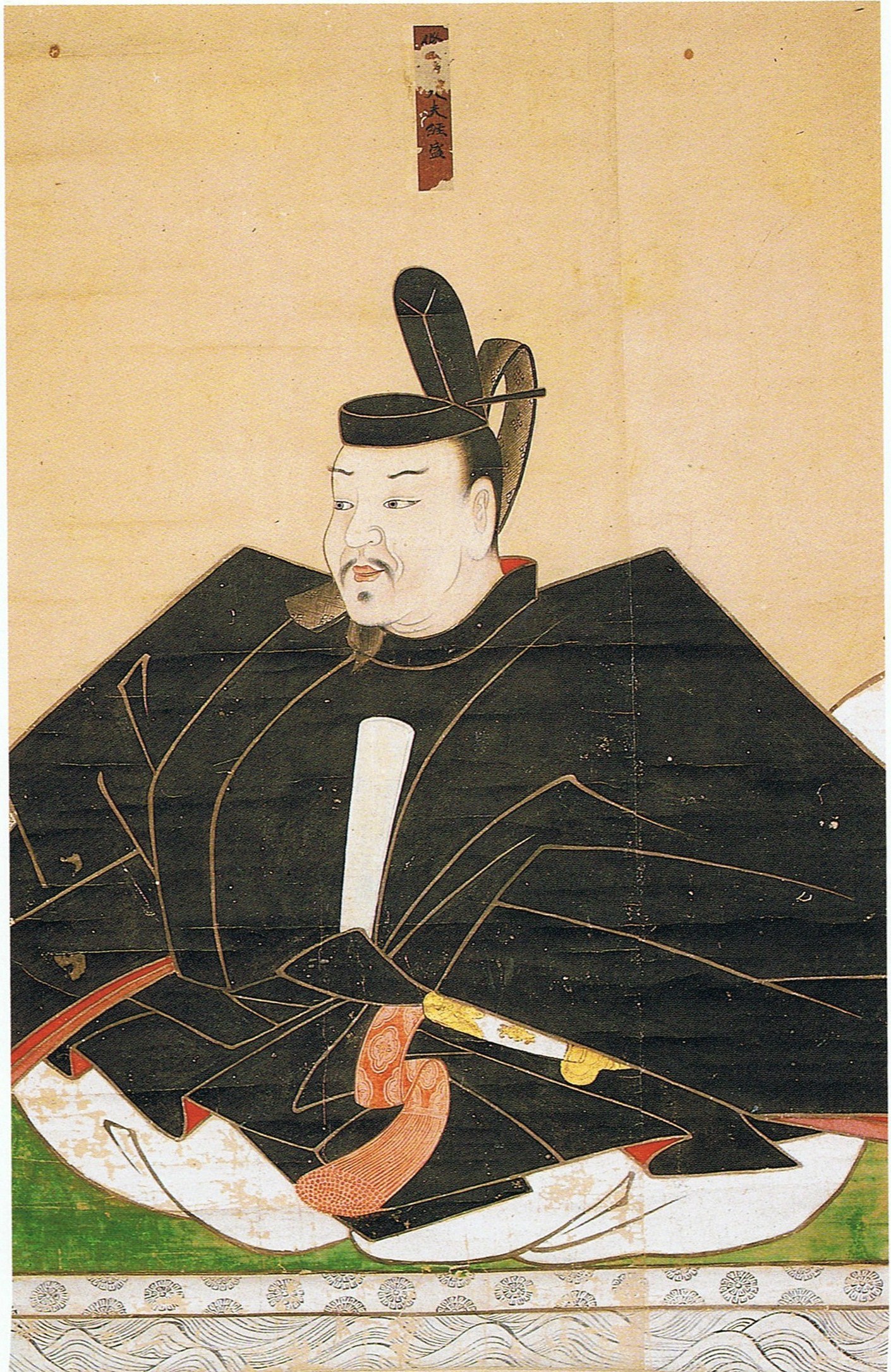|
Taira No Tadamori
was the head of the Taira clan. He was son of Taira no Masamori, and father of Taira no Kiyomori. Tadamori was also governor of the provinces of Harima, Ise, Bizen, and Tajima. He consolidated the influence of the Taira clan at the Imperial Court, and is said to have been the first samurai to serve the Emperor directly, at Court. As a servant of the Court, Tadamori waged campaigns, beginning in 1129, against pirates on the coasts of San'yōdō and Nankaidō. He also served his own clan in battling the warrior monks of Nara and of Mount Hiei. Tadamori is also credited with the construction of the Rengeō-in, a major and now-famous temple in Kyoto, which includes the longest wooden building in the world, the Sanjūsangen-dō. Tadamori was granted the governorship of Tajima province as a reward for completing this project. Family * Father: Taira no Masamori * Wife: Gion no Nyogo (?-1147) * Sons: ** Taira no Kiyomori ** Taira no Tsunemori ** Taira no Norimori ** Taira no Tadanori ... [...More Info...] [...Related Items...] OR: [Wikipedia] [Google] [Baidu] |
Taira No Kiyomori
was a military leader and ''kugyō'' of the late Heian period of Japan. He established the first samurai-dominated administrative government in the history of Japan. Early life Kiyomori was born in Heian-kyō, Japan, in 1118 as the first son of Taira no Tadamori, who was the head of the Taira clan. It has been speculated that Kiyomori was actually an illegitimate son of Emperor Shirakawa. His mother, Gion no Nyogo, was a palace servant according to ''The Tale of the Heike''. Family * Father: Taira no Tadamori * Mother: Gion no Nyogo (d. 1147) *Concubines and regents: **Wife: N/A *** Taira no Shigemori *** Taira no Munemori *** Taira no Tomomori *** Taira no Tokuko *** Taira no Shigehira Career After the death of his father in 1159, Kiyomori assumed control of the Taira clan and ambitiously entered the political realm in which he had previously only held a minor post. Before that though, in 1156, he and Minamoto no Yoshitomo, head of the Minamoto clan, suppressed the rebe ... [...More Info...] [...Related Items...] OR: [Wikipedia] [Google] [Baidu] |
Wokou
''Wokou'' (; Japanese: ''Wakō''; Korean: 왜구 ''Waegu''), which literally translates to "Japanese pirates" or "dwarf pirates", were pirates who raided the coastlines of China and Korea from the 13th century to the 16th century.Wakō Encyclopaedia Britannica The wokou came from , , and ethnicities which varied over time and raided the mainland from islands in the |
1096 Births
1 (one, unit, unity) is a number representing a single or the only entity. 1 is also a numerical digit and represents a single unit of counting or measurement. For example, a line segment of ''unit length'' is a line segment of length 1. In conventions of sign where zero is considered neither positive nor negative, 1 is the first and smallest positive integer. It is also sometimes considered the first of the infinite sequence of natural numbers, followed by 2, although by other definitions 1 is the second natural number, following 0. The fundamental mathematical property of 1 is to be a multiplicative identity, meaning that any number multiplied by 1 equals the same number. Most if not all properties of 1 can be deduced from this. In advanced mathematics, a multiplicative identity is often denoted 1, even if it is not a number. 1 is by convention not considered a prime number; this was not universally accepted until the mid-20th century. Additionally, 1 is the ... [...More Info...] [...Related Items...] OR: [Wikipedia] [Google] [Baidu] |
Sanjūsangen-dō
is a Buddhist temple of the Tendai sect in the Higashiyama district of Kyoto, Japan. The temple was founded in 1164 by Taira no Kiyomori for the cloistered Emperor Go-Shirakawa. It is officially known as and belongs to the Myōhō-in temple complex. Sanjūsangen-dō is most famous for its massively long ''hondō'' (main hall) dating from 1266 (Kamakura period) and designated a National Treasure of Japan, and the collection of sculptures it houses, including 1001 standing Thousand-armed Kannon, 28 standing attendants, a statue of Fūjin and a statue of Raijin, and the principal image of the temple, a big seated statue of Thousand-armed Kannon, all of them designated National Treasures in the category of sculptures, most of them dating to the Heian to Kamakura periods. History Sanjūsangen-dō was founded by the famous ''samurai'' and politician Taira no Kiyomori (1118-1181) in 1164 for the cloistered Emperor Go-Shirakawa. He built the temple in the emperor's own comp ... [...More Info...] [...Related Items...] OR: [Wikipedia] [Google] [Baidu] |
Kyoto
Kyoto (; Japanese: , ''Kyōto'' ), officially , is the capital city of Kyoto Prefecture in Japan. Located in the Kansai region on the island of Honshu, Kyoto forms a part of the Keihanshin metropolitan area along with Osaka and Kobe. , the city had a population of 1.46 million. The city is the cultural anchor of a substantially larger metropolitan area known as Greater Kyoto, a metropolitan statistical area (MSA) home to a census-estimated 3.8 million people. Kyoto is one of the oldest municipalities in Japan, having been chosen in 794 as the new seat of Japan's imperial court by Emperor Kanmu. The original city, named Heian-kyō, was arranged in accordance with traditional Chinese feng shui following the model of the ancient Chinese capital of Chang'an/Luoyang. The emperors of Japan ruled from Kyoto in the following eleven centuries until 1869. It was the scene of several key events of the Muromachi period, Sengoku period, and the Boshin War, such as the Ōnin War, the Ho ... [...More Info...] [...Related Items...] OR: [Wikipedia] [Google] [Baidu] |
Mount Hiei
is a mountain to the northeast of Kyoto, lying on the border between the Kyoto and Shiga Prefectures, Japan. The temple of Enryaku-ji, the first outpost of the Japanese Tendai (Chin. Tiantai) sect of Buddhism, was founded atop Mount Hiei by Saichō in 788 and rapidly grew into a sprawling complex of temples and buildings that were roughly divided into three areas: # The area near the summit, and technically in Kyoto Prefecture. # The area, also near the summit, where Enryaku-ji Temple was first founded, and located just within Shiga Prefecture. # The area near the northernmost end of Mount Hiei. Due to its remoteness, as a temple complex it experienced periods of revival and decline, starting with Ennin, later revived by Ryōgen and made famous by the scholar-monk Genshin. Due to its position north-east of the ancient capital of Kyoto, it was thought in ancient geomancy practices to be a protective bulwark against negative influences on the capital, which along with the r ... [...More Info...] [...Related Items...] OR: [Wikipedia] [Google] [Baidu] |
Nara, Nara
is the capital city of Nara Prefecture, Japan. As of 2022, Nara has an estimated population of 367,353 according to World Population Review, making it the largest city in Nara Prefecture and sixth-largest in the Kansai region of Honshu. Nara is a core city located in the northern part of Nara Prefecture bordering the Kyoto Prefecture. Nara was the capital of Japan during the Nara period from 710 to 794 as the seat of the Emperor before the capital was moved to Kyoto. Nara is home to eight temples, shrines, and ruins, specifically Tōdai-ji, Saidai-ji, Kōfuku-ji, Kasuga Shrine, Gangō-ji, Yakushi-ji, Tōshōdai-ji, and the Heijō Palace, together with Kasugayama Primeval Forest, collectively form the Historic Monuments of Ancient Nara, a UNESCO World Heritage Site. Etymology By the Heian period, a variety of different characters had been used to represent the name Nara: , , , , , , , , , , , , , , , and . A number of theories for the origin of the name "Nara" have been pro ... [...More Info...] [...Related Items...] OR: [Wikipedia] [Google] [Baidu] |
Nankaidō
is a Japanese geographical term. It means both an ancient division of the country and the main road running through it. The road connected provincial capitals in this region. It was part of the Gokishichidō system. The ''Nankaidō'' encompassed the pre-Meiji provincial lands of Kii and Awaji, plus the four provinces that made up the island of Shikoku: Awa, Sanuki, Tosa, and Iyo. The road extended from Nara to the seacoast to the south on the Kii Peninsula of the island of Honshū in Japan and crossing the sea, extended to Yura (nowadays Sumoto) and then Shikoku. Nankaidō earthquakes :''See Historic tsunami for a full list of Nankai quakes with tsunami.'' Many historic earthquakes bear the name "Nankai" or "Nankaido", as specific epicenters were known at the time. Often quakes take on the Japanese era name along with location such as Nankaido. These include: *1498 Meiō Nankaidō earthquake * 1605 Keichō Nankaidō earthquake * 1854 Ansei-Nankai earthquake *1944 Tōna ... [...More Info...] [...Related Items...] OR: [Wikipedia] [Google] [Baidu] |
San'yōdō
is a Japanese geographical term. It means both an ancient division of the country and the main road running through it. The San'yōdō corresponds for the most part with the modern conception of the San'yō region. This name derives from the idea that the southern side of the central mountain chain running through Honshū was the "sunny" side, while the northern side was the "shady" (山陰 ''San'in'') side. The region was established as one of the Gokishichidō (Five provinces and seven roads) during the Asuka period (538-710), and consisted of the following eight ancient provinces: Harima, Mimasaka, Bizen, Bitchū, Bingo, Aki, Suō and Nagato. However, this system gradually disappeared by the Muromachi period (1333-1467). The San'yōdō, however, continued to be important, and highly trafficked through the Edo period (1603-1867). Running mostly east-west, its eastern terminus, along with those of most of the medieval highways (街道, ''kaidō''), was at Kyoto. From th ... [...More Info...] [...Related Items...] OR: [Wikipedia] [Google] [Baidu] |
Tajima Province
was a province of Japan in the area of northern Hyōgo Prefecture. Tajima bordered on Tango and Tanba to the east, Harima to the south, and Inaba to the west. Its abbreviated form name was . In terms of the Gokishichidō system, Tajimao was one of the provinces of the San'indō circuit. Under the ''Engishiki'' classification system, Tajima was ranked as one of the "superior countries" (上国) in terms of importance, and one of the "near countries" (近国) in terms of distance from the capital. The provincial capital was located in what is now the city of Toyooka. The ''ichinomiya'' of the province is the Izushi Shrine also located in Toyooka. The area of the province was 2099.01 square kilometers. History Early history The early history of the Tajima region is uncertain. There appear to have been two power centers. The Tajima ''Kuni no miyatsuko'' ruled in eastern Tajima (present-day Asago District and Yabu District) and are mentioned in the ''Kujiki''. They tenuously ... [...More Info...] [...Related Items...] OR: [Wikipedia] [Google] [Baidu] |
Taira No Tsunemori
Taira no Tsunemori ( ja, 平經盛 たいら の つねもり) (1124–1185) was the 3rd son of Taira no Tadamori and a younger half-brother of Taira no Kiyomori. He committed suicide with his younger brother, Taira no Norimori, at the Battle of Dan-no-ura, the last battle of the Genpei War The was a national civil war between the Taira and Minamoto clans during the late Heian period of Japan. It resulted in the downfall of the Taira and the establishment of the Kamakura shogunate under Minamoto no Yoritomo, who appointed himself .... {{DEFAULTSORT:Tsunemori, Taira no 1124 births 1185 deaths People of Heian-period Japan Japanese military personnel who committed suicide Suicides by drowning in Japan Taira clan ... [...More Info...] [...Related Items...] OR: [Wikipedia] [Google] [Baidu] |







